Rank Species | Subfamily Lobelioideae Scientific name Lobelia urens | |
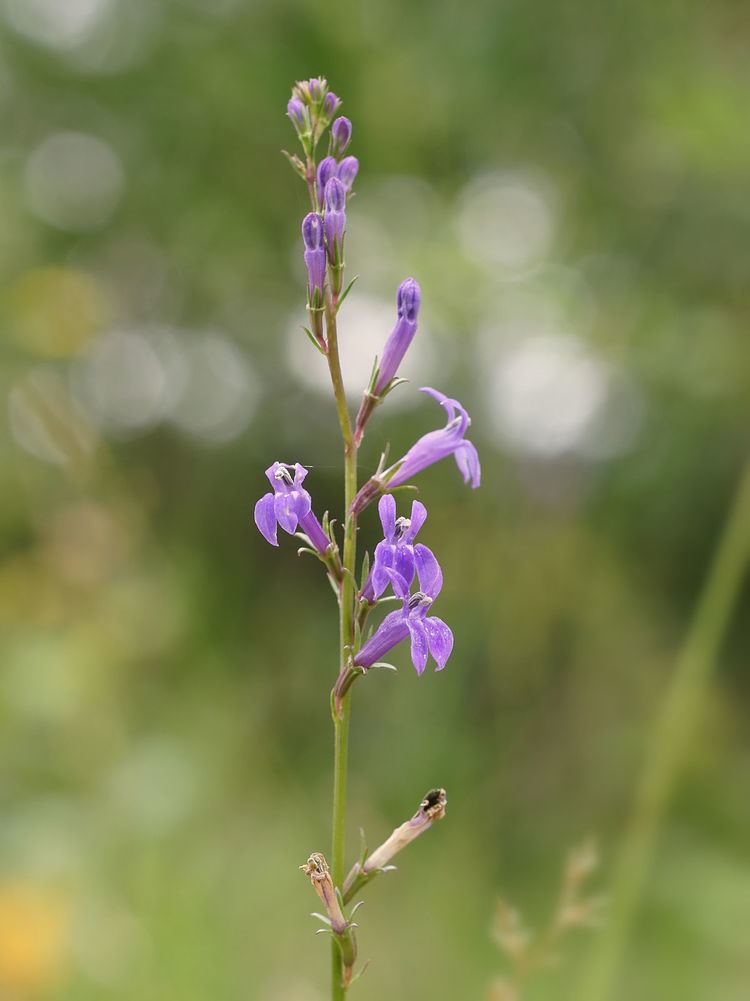 | ||
Similar Lobelia niihauensis, Lobelia aberdarica, Lobelia laxiflora, Lobelia kalmii, Lobelia rhombifolia | ||
Lobelia urens has the English name of heath lobelia or acrid lobelia. It has a Lusitanian distribution running from Morocco along the Atlantic Coast to Belgium. It can be found in the islands of south Europe: Madeira, Tercia, Falia, Gibraltar. In Spain it is found in grazed pasture of upland valleys between 600 and 915 metres high. In Portugal it exists along the coastal plain, passing into the wet northern province valleys up to 800 metres. In north France it is found in lowland coastal areas. It is rare in Britain and found in South and South West of England in lowland areas up to 210 metres high. It is not threatened in Europe.
Contents
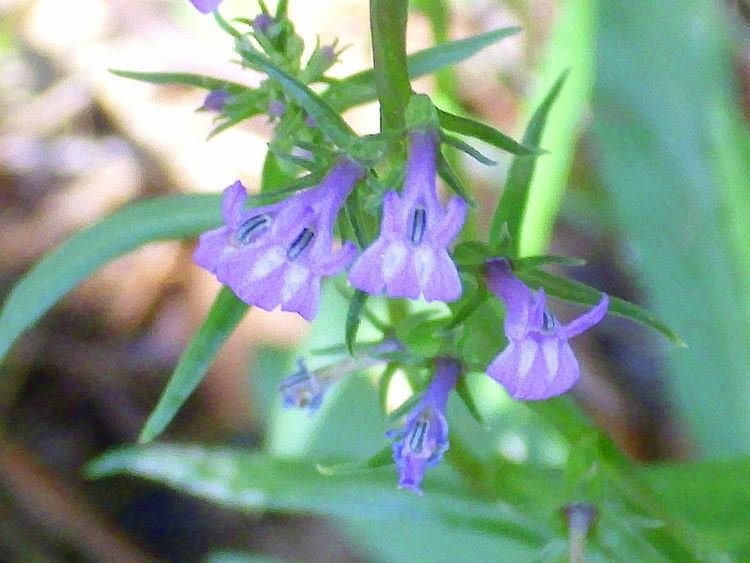
It can be found in communities on grassy heaths, rough pastures, and open heathy woodlands, often found on woodland margins on infertile acid soils. Within this they are found in low-lying terrain, often valley bottoms. The soils are seasonally waterlogged.
Description
It is a more or less hairless perennial which grows up to 60 cm tall. It has rhizomes.
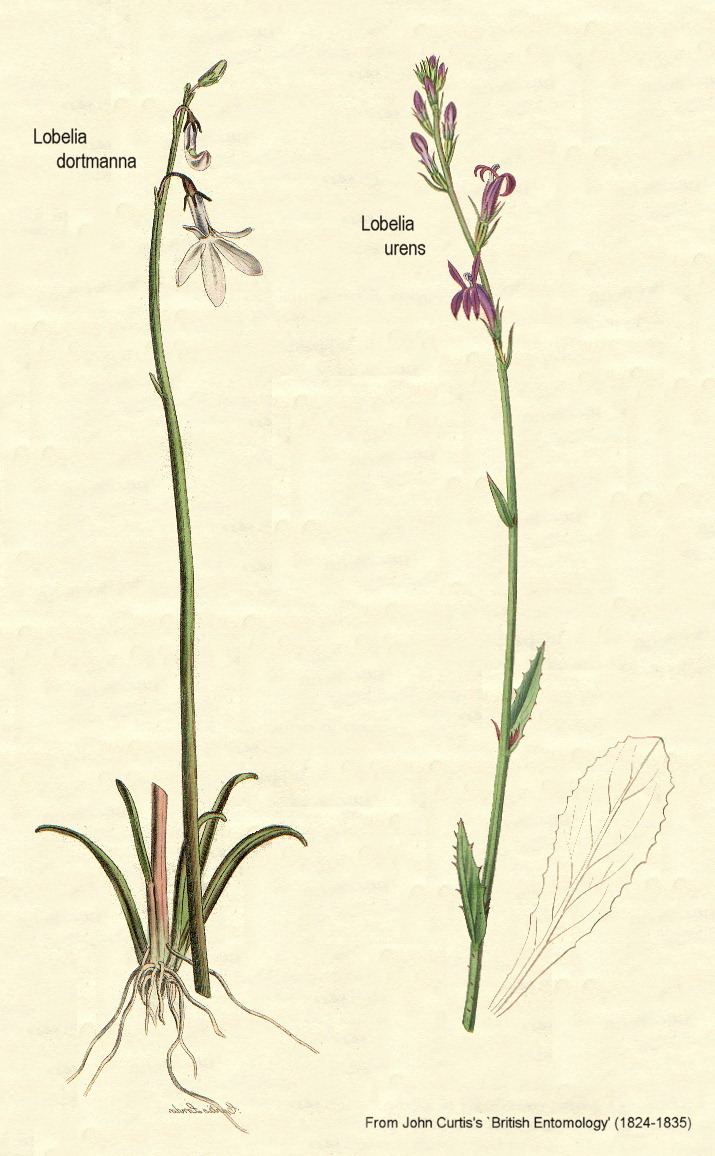
The leaves are obovate at the base, and linear to oblong higher up. They are shiny dark green and toothed. They have very short stalks.
The calyx teeth are long and very narrow.
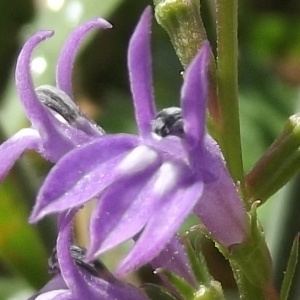
The flowers are up to 1.5 cm long, blue-purple. They have 2 narrow lobes on upper lip, and 3 narrow teeth on the lower. The stalks are less than 1 cm, and corrola lobes are less than 2mm wide. It flowers from August until September. The flowers are hermaphrodite and zygomorphic.
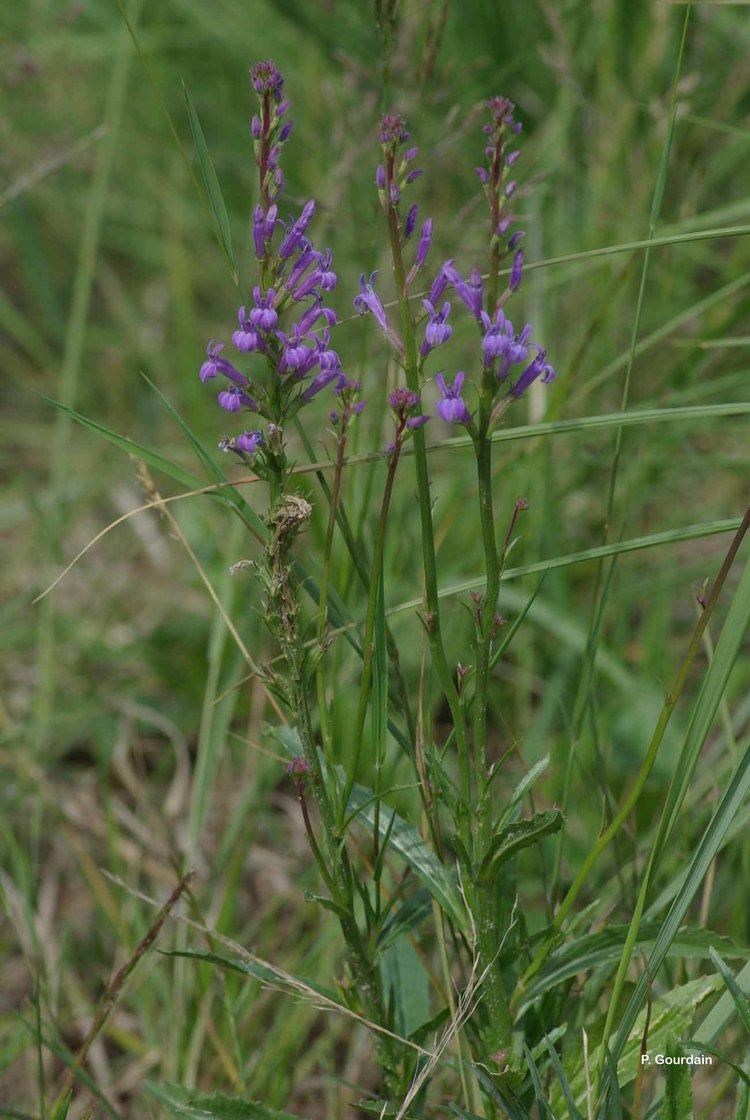
The plant requires bare ground patches in which the seeds can germinate. Germination is improved in soil with a high moisture content. Seeds are produced throughout the year, peaking in production during July and August. Only those that are produced March to June survive.
Differences from Garden lobelia

Garden lobelia Lobelia erinus is similar, but is slender, trailing, an annual, comes in different colours, the flower stalks are up to 2 cm, and the lower 3 corrola lobes are more than 2mm wide.
Associated species
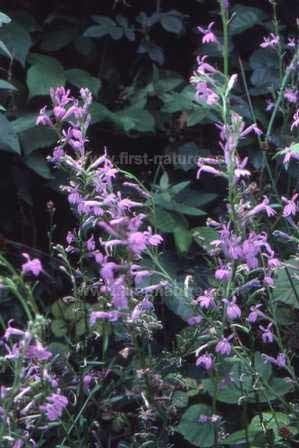
They are often found with Juncus articulatus, Juncus conglomeratus, Lotus pedunculatus, Mentha aquatica (water mint), Molinia caerulea(Purple Moor Grass), Potentilla erecta, Pulicaria dysenterica, and Salix cinerea.
